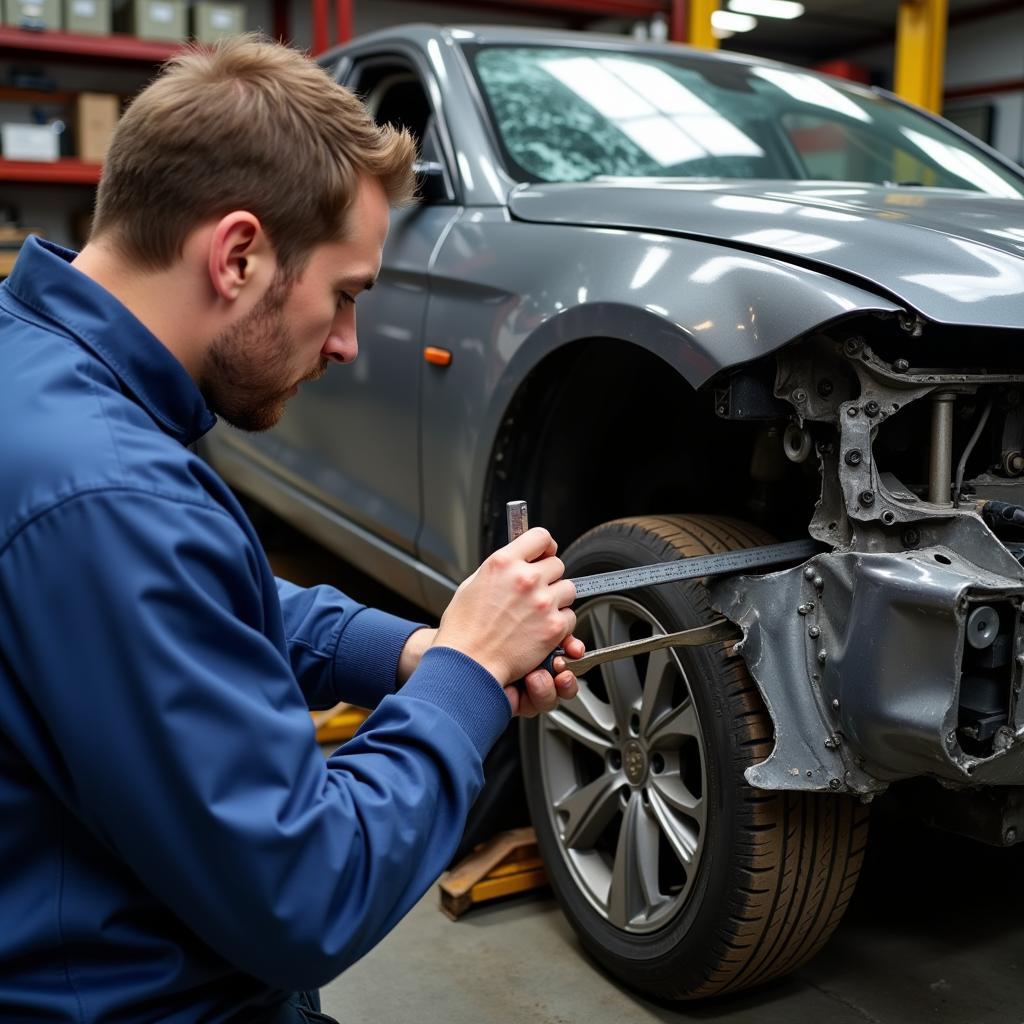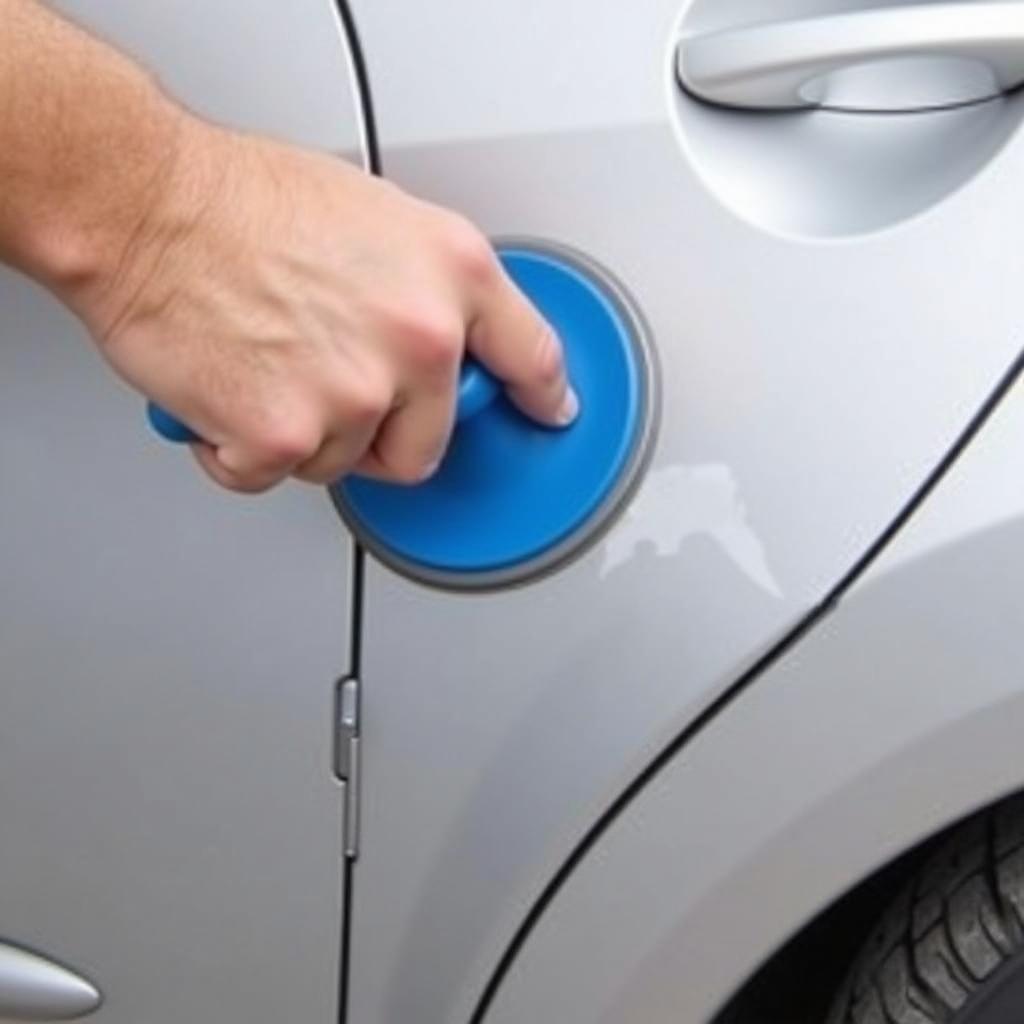Fixing your kayak to your car can be tricky. Whether you’re a seasoned paddler or just starting out, securing your kayak properly is crucial for a safe and damage-free journey. This guide will provide you with everything you need to know about How To Fix Kayak On Car, from choosing the right equipment to troubleshooting common problems.
Choosing the Right Roof Rack System
Before you even think about how to fix kayak on car, you need the right roof rack system. This includes crossbars, kayak carriers, and tie-down straps. Crossbars provide the foundation for your kayak carrier. Make sure they are compatible with your vehicle and rated for the weight of your kayak. Kayak carriers come in various styles, including J-cradles, stackers, and saddles. J-cradles are popular for their ease of use and versatility. Stackers allow you to transport multiple kayaks, while saddles offer a more secure fit for longer kayaks. Tie-down straps are essential for securing the kayak to the roof rack and preventing movement during transit. Choose straps made of durable material with cam buckles for easy tightening.
How to Load a Kayak onto Your Car
Loading a kayak onto your car can be a one-person job with the right technique. Start by lifting the kayak from the ground and placing the bow on the rear crossbar. Then, walk the kayak forward, supporting it with your other hand, until it rests on the front crossbar. For heavier kayaks, consider using a kayak loading assist device like a roller or lift.
Securing Your Kayak with Tie-Down Straps
Once the kayak is on the roof rack, it’s time to secure it with tie-down straps. Run the straps over the hull of the kayak and under the crossbars, ensuring they are snug but not overly tight. Use cam buckles to tighten the straps, and secure the loose ends to prevent flapping in the wind. Also, consider using bow and stern lines for added stability, especially on longer trips.
Troubleshooting Common Kayak Carrying Problems
Even with the best preparation, you might encounter problems. If your kayak shifts during transport, double-check the tightness of your straps and ensure the kayak is centered on the roof rack. If your straps loosen, consider using locking straps for added security. Excessive wind noise can often be reduced by using foam blocks or pool noodles to fill the gaps between the kayak and the crossbars.
How do I transport a kayak without roof racks?
If your car doesn’t have roof racks, you can still transport a kayak using foam blocks and tie-down straps, but this method is less secure and only recommended for short distances. A dedicated roof rack system is always the preferred solution.
What are the best kayak tie-down straps?
Look for heavy-duty straps with cam buckles and a weight rating appropriate for your kayak. Consider straps with padded buckles to protect your kayak’s finish.
“A properly secured kayak is a safe kayak,” says John Davis, Automotive Engineer at Autotippro. “Invest in quality equipment and take the time to learn the correct loading and securing techniques. It will make your paddling adventures much more enjoyable.”
Conclusion
Learning how to fix kayak on car correctly is essential for any kayaking enthusiast. By choosing the right equipment and following the proper procedures, you can ensure a safe and enjoyable journey to your next paddling destination. Don’t hesitate to contact Autotippro for personalized advice and support. You can reach us at +1 (641) 206-8880 or visit our office at 500 N St Mary’s St, San Antonio, TX 78205, United States.
“Remember, safety first,” adds Sarah Miller, Senior Mechanic at Autotippro. “Always double-check your setup before hitting the road.”
FAQ
- Can I carry a kayak on my car without a roof rack? While possible for short distances using foam blocks and straps, it’s less secure and a dedicated roof rack is recommended.
- What type of kayak carrier is best? J-cradles are popular for their versatility, stackers for multiple kayaks, and saddles for longer kayaks.
- How tight should my tie-down straps be? Snug but not overly tight, enough to prevent movement without damaging the kayak.
- How can I reduce wind noise when carrying a kayak? Use foam blocks or pool noodles to fill gaps between the kayak and crossbars.
- What should I do if my kayak shifts during transport? Stop immediately and double-check the tightness of your straps and kayak’s position on the rack.
- What are bow and stern lines for? They provide extra stability, especially for longer kayaks and on longer trips.
- Where can I get expert advice on how to fix kayak on car? Contact AutoTipPro at +1 (641) 206-8880 or visit our office in San Antonio, TX.






Leave a Reply